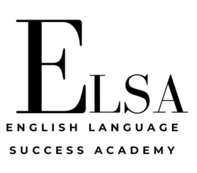At the heart of the TOEIC exam lies a comprehensive Listening Comprehension section, challenging test-takers to navigate through various audio scenarios. This article delves into effective strategies to enhance your listening skills specifically for the TOEIC, ensuring you’re well-prepared to tackle this critical component of the exam.
Understanding the TOEIC Listening Section
Before diving into strategies, it’s essential to understand what you’re up against. The TOEIC Listening Comprehension section consists of four parts:
- Photographs
- Question-Response
- Short Conversations
- Short Talks
Each part tests different aspects of your listening ability, from identifying specific details to understanding overall context and implied meanings.
General Listening Strategies
1. Predicting Content
One of the most powerful techniques in TOEIC listening is anticipation. Before each audio segment begins:
- Quickly scan any available visual cues or questions.
- Based on these, predict the topic, setting, or potential vocabulary you might hear.
This mental preparation primes your brain to focus on relevant information, making it easier to catch key details.
2. Focusing on Keywords
During the audio playback:
- Listen for content words (nouns, verbs, adjectives) that carry the main message.
- Pay attention to transition words (however, although, therefore) that indicate a shift in ideas or conclusions.
Identifying these keywords helps you grasp the main ideas quickly, even if you miss some details.
3. Understanding Different Accents
The TOEIC features speakers with various English accents. To prepare:
- Expose yourself to diverse English accents regularly through movies, TV shows, and podcasts from different English-speaking countries.
- Focus on understanding the overall message rather than getting hung up on unfamiliar pronunciations.
4. Active Listening Practice
Incorporate active listening into your daily routine:
- Listen to English news broadcasts, focusing on summarizing main points.
- Engage with business-related podcasts, practicing note-taking as you listen.
- Use TOEIC-specific audio materials to familiarize yourself with the exam’s pace and style.
Specific Strategies for Each TOEIC Listening Part
Part 1: Photographs
- Quickly scan the image before the audio plays.
- Predict possible vocabulary related to the picture’s elements, actions, and setting.
- Listen for descriptive words that match or contradict what you see.
Part 2: Question-Response
- Focus on the question word (who, what, when, where, why, how) to anticipate the type of information needed.
- Listen carefully to the entire question, as the key information is often at the end.
- Choose the response that logically answers the question, not just one that repeats words from it.
Part 3: Short Conversations
- Pay attention to the relationship between speakers and the context (e.g., office, store) to help predict content.
- Listen for the main idea in the first few exchanges, then focus on specific details.
- Be alert for changes in opinion or surprising information near the end of the conversation.
Part 4: Short Talks
- Read the questions before the talk begins to know what information to listen for.
- Take brief notes on main points and specific details mentioned in the questions.
- Use the speaker’s tone and emphasis to identify important information.
Advanced Listening Techniques
Shadowing
This technique involves repeating what you hear immediately after the speaker, mimicking their intonation and rhythm. Regular practice can significantly improve your listening comprehension and speaking fluency.
Dictation Exercises
Transcribe short audio clips word-for-word. This practice sharpens your ability to catch every word and distinguish similar-sounding terms, a crucial skill for the TOEIC.
Visualization
As you listen, create mental images of what’s being described. This technique enhances comprehension and retention, especially useful for the photograph and short talk sections.
Overcoming Common Challenges
- Speed: If the audio seems too fast, focus on grasping the main idea rather than every word.
- Unfamiliar Vocabulary: Use context clues to guess meanings. Remember, you don’t need to understand every word to answer correctly.
- Concentration: Practice listening for longer periods to build stamina. Start with 15-minute sessions and gradually increase.
Elsa Says:
Mastering TOEIC listening is about more than just hearing English; it’s about active engagement with the language. By employing strategies like predicting content, focusing on keywords, and understanding various accents, you’ll be well-equipped to tackle any listening challenge the TOEIC throws your way. Remember, consistent practice with diverse English audio sources is key. Approach each part of the listening section with specific techniques, and don’t forget to leverage advanced methods like shadowing and visualization. With dedication and these targeted strategies, you’ll be on your way to TOEIC success. Good luck!



